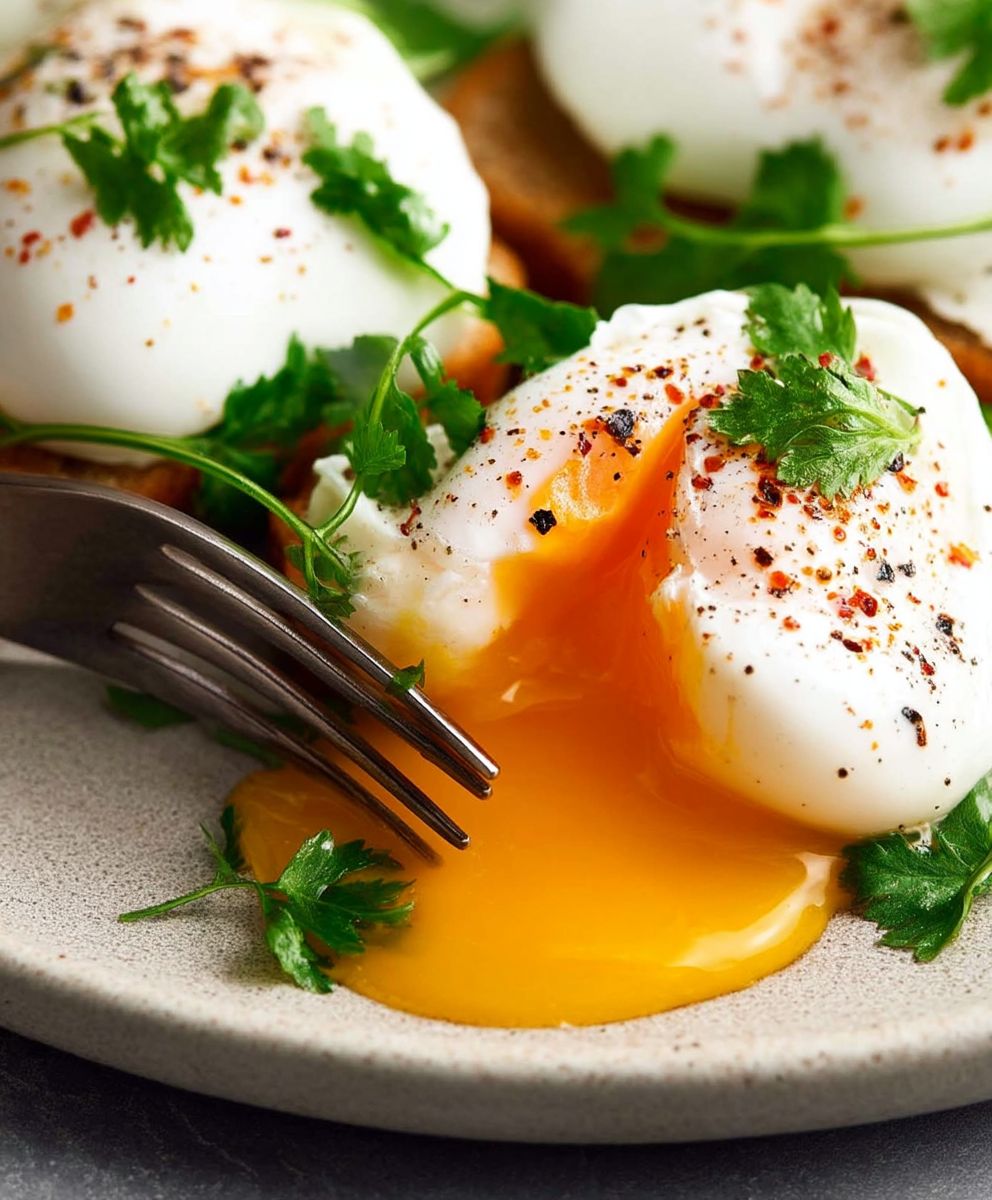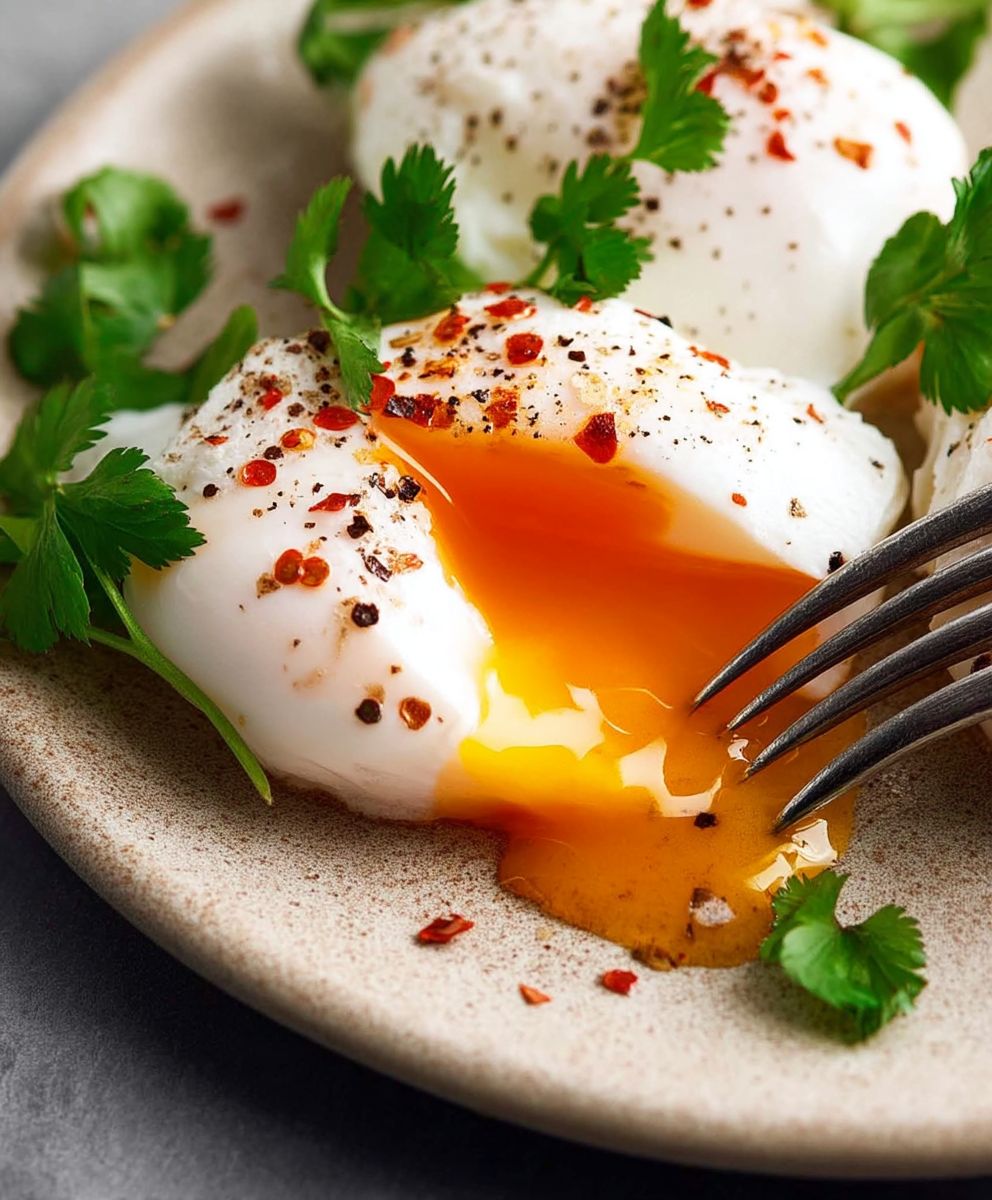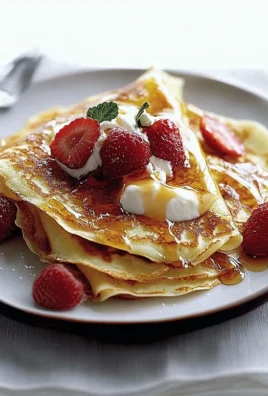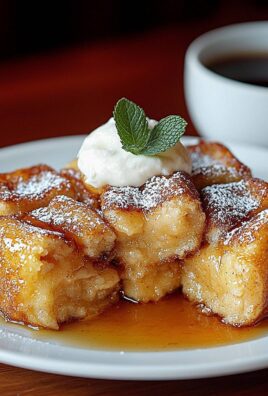Poached Eggs Guide: Your Path to Silky Smooth Perfection
Have you ever dreamt of effortlessly creating those picture-perfect poached eggs, the kind that grace the brunch menus of upscale cafes? The ones with the glistening, perfectly formed whites and the molten, golden yolks that ooze out at the slightest touch? Well, dream no more! This comprehensive poached eggs guide will demystify the process and equip you with all the knowledge and techniques you need to master this culinary art.
While seemingly simple, the poached egg has a rich history, appearing in cookbooks as far back as the 14th century. It’s a testament to the enduring appeal of simple, elegant cooking. But why do we love them so much? Perhaps it’s the luxurious texture the delicate dance between the firm white and the liquid gold. Or maybe it’s the versatility; a poached egg elevates everything from avocado toast to Eggs Benedict to a simple bowl of asparagus.
This poached eggs guide isn’t just a recipe; it’s a journey. We’ll explore the science behind the perfect poach, troubleshoot common pitfalls, and share our top tips for achieving consistently stunning results. Get ready to impress your friends and family with your newfound egg-poaching prowess! Let’s get started!
Ingredients:
- Extra-large eggs (as many as you want to poach)
- White vinegar (1 tablespoon per quart of water)
- Water (enough to fill a deep saucepan or pot)
- Salt (to taste)
- Pepper (to taste)
- Optional: Fresh herbs (like chives or parsley, chopped, for garnish)
- Optional: Toast, English muffins, or bagels (for serving)
- Optional: Hollandaise sauce (for Eggs Benedict)
Preparing the Water and Eggs:
- Choose the Right Pan: Select a deep saucepan or pot that’s wide enough to comfortably hold the number of eggs you plan to poach without overcrowding. A 10-12 inch diameter pan is usually a good size for poaching 2-4 eggs at a time.
- Fill with Water: Fill the saucepan with at least 3 inches of water. This depth ensures the eggs have enough room to float and cook evenly without sticking to the bottom.
- Add Vinegar: Add 1 tablespoon of white vinegar per quart of water to the saucepan. The vinegar helps the egg whites coagulate quickly, preventing them from spreading out too much in the water and creating a neater poached egg. Don’t worry, you won’t taste the vinegar in the finished product!
- Season with Salt: Add a pinch of salt to the water. This seasons the eggs slightly as they cook.
- Bring to a Simmer: Place the saucepan over medium heat and bring the water to a gentle simmer. You should see small bubbles forming on the bottom of the pan, but the water should not be boiling vigorously. A rolling boil will agitate the eggs too much and result in ragged edges.
- Crack the Eggs: While the water is heating, crack each egg into a small ramekin or bowl. This makes it easier to gently slide the eggs into the simmering water without breaking the yolks. Cracking the eggs directly into the water can lead to a messy situation. I usually prepare all my eggs before I even start the simmering process.
Poaching the Eggs:
- Create a Whirlpool (Optional but Recommended): This is a technique that helps the egg whites wrap around the yolks, creating a more compact and visually appealing poached egg. Using a spoon, gently swirl the simmering water to create a slow whirlpool.
- Gently Slide in the Eggs: Carefully slide each egg from the ramekin into the center of the whirlpool (if you’re using it) or directly into the simmering water. Try to keep the eggs separate so they don’t stick together. If you’re poaching multiple eggs, add them one at a time, giving each egg a few seconds to set before adding the next.
- Cook the Eggs: Let the eggs cook undisturbed for 3-4 minutes for a runny yolk, 4-5 minutes for a medium-set yolk, and 5-6 minutes for a firmer yolk. The cooking time will depend on the size of the eggs and the temperature of the water. I usually aim for 4 minutes for that perfect runny yolk.
- Check for Doneness: After the initial cooking time, gently poke the egg white with a slotted spoon. The white should be firm and opaque, but the yolk should still be soft and jiggly. If the white is still translucent or the yolk is too firm, continue cooking for another minute or two, checking frequently.
- Remove the Eggs: Once the eggs are cooked to your liking, use a slotted spoon to carefully remove them from the water. Allow any excess water to drain off.
- Blot with Paper Towels (Optional): Gently blot the poached eggs with a paper towel to remove any excess water. This will prevent your toast or other serving base from becoming soggy.
Serving and Enjoying:
- Serve Immediately: Poached eggs are best served immediately while they’re still warm and the yolks are runny.
- Serving Suggestions: There are countless ways to enjoy poached eggs! Here are a few ideas:
- Eggs Benedict: Serve poached eggs on toasted English muffins with Canadian bacon and hollandaise sauce. This is a classic for a reason!
- Avocado Toast: Top toasted bread with mashed avocado, a poached egg, and a sprinkle of salt, pepper, and red pepper flakes.
- Breakfast Bowl: Create a breakfast bowl with quinoa, roasted vegetables, and a poached egg on top.
- Salad Topper: Add a poached egg to a salad for extra protein and richness.
- Simple Toast: Serve poached eggs on buttered toast with salt and pepper. Sometimes, simple is best!
- Garnish (Optional): Garnish your poached eggs with fresh herbs like chopped chives or parsley for added flavor and visual appeal. A sprinkle of paprika or a drizzle of hot sauce can also add a nice touch.
- Season to Taste: Season the poached eggs with salt and pepper to taste.
- Enjoy! Dig in and enjoy your perfectly poached eggs! The runny yolk is the best part, so don’t be afraid to get a little messy.
Troubleshooting Tips:
- Egg Whites Spreading Too Much: If the egg whites are spreading too much in the water, make sure the water is not boiling too vigorously. Also, adding enough vinegar to the water is crucial for helping the whites coagulate quickly.
- Yolks Breaking: Be very gentle when sliding the eggs into the water and when removing them. Use a slotted spoon to support the eggs as you lift them out of the water. If a yolk does break, don’t worry! It still tastes delicious.
- Eggs Sticking to the Bottom: Make sure the water is deep enough and that the eggs have enough room to float freely. Gently stir the water occasionally to prevent the eggs from sticking.
- Unevenly Cooked Eggs: Ensure the water is simmering gently and that the eggs are not overcrowded in the pan. If the eggs are cooking unevenly, you can gently nudge them around in the water to ensure they cook evenly.
- Poached Eggs Look Ragged: The freshness of the eggs can affect the appearance of poached eggs. Fresher eggs tend to hold their shape better. Using the whirlpool technique can also help create a neater poached egg.
Advanced Techniques:
Using an Egg Poaching Pan:
Egg poaching pans are specifically designed to make poaching eggs easier. They typically have individual cups that hold the eggs and keep them separate while they cook. To use an egg poaching pan:
- Fill the pan with water according to the manufacturer’s instructions.
- Grease the individual cups with butter or cooking spray to prevent the eggs from sticking.
- Crack an egg into each cup.
- Place the pan over medium heat and bring the water to a simmer.
- Cover the pan and cook for 3-5 minutes, or until the eggs are cooked to your liking.
- Remove the eggs from the cups with a spoon or spatula.
Using Plastic Wrap:
This technique creates perfectly round poached eggs with a neat appearance.
- Lightly grease a piece of plastic wrap with cooking spray.
- Line a small ramekin or bowl with the plastic wrap.
- Crack an egg into the plastic wrap-lined ramekin.
- Gather the edges of the plastic wrap and twist them to form a small pouch.
- Tie the pouch tightly with kitchen twine or a rubber band.
- Gently lower the pouch into the simmering water.
- Cook for 3-5 minutes, or until the egg is cooked to your liking.
- Remove the pouch from the water and carefully cut it open to release the poached egg.
Poaching Eggs Ahead of Time:
If you need to poach eggs ahead of time, you can do so and then store them in the refrigerator. To reheat poached eggs:
- Poach the eggs as directed.
- Immediately transfer the poached eggs to a bowl of ice water to stop the cooking process.
- Store the poached eggs in the refrigerator for up to 24 hours.
- To reheat, gently warm the poached eggs in simmering water for about 1 minute, or until heated through.
Variations:
- Spiced Poached Eggs: Add a pinch of spices like cumin, coriander, or chili powder to the water for a flavorful twist.
- Herb-Infused Poached Eggs: Add fresh herbs like thyme

Conclusion:
So there you have it! Mastering the art of perfect poached eggs might seem daunting at first, but with these simple steps and a little practice, you’ll be serving up brunch-worthy eggs in no time. I truly believe this is a must-try recipe because it unlocks a world of culinary possibilities. Forget those rubbery, sad-looking poached eggs you might have encountered before. This method guarantees a tender white and a gloriously runny yolk every single time.
Why is this a must-try? Because a perfectly poached egg elevates any dish. Think about it: a simple piece of toast transforms into a gourmet experience with a poached egg and a sprinkle of sea salt. A humble salad becomes a decadent delight with the addition of that golden, flowing yolk. And let’s not forget the classic Eggs Benedict, which simply wouldn’t exist without the magic of a perfectly poached egg. It’s a foundational skill that will impress your friends, family, and most importantly, yourself!
But the fun doesn’t stop there! The beauty of poached eggs lies in their versatility. They are the ultimate blank canvas, ready to be adorned with your favorite flavors.
Serving Suggestions and Variations:
* Classic Eggs Benedict: This is the obvious choice, and for good reason! Top your poached eggs with Canadian bacon, hollandaise sauce, and a sprinkle of paprika.
* Avocado Toast with a Twist: Elevate your avocado toast by adding a poached egg and a drizzle of sriracha mayo.
* Poached Eggs Florentine: Serve your poached eggs on a bed of wilted spinach with a creamy cheese sauce.
* Breakfast Salad: Toss mixed greens with your favorite vegetables, a light vinaigrette, and top with a poached egg for a healthy and satisfying breakfast.
* Spicy Shakshuka: Nestle your poached eggs in a flavorful tomato and pepper sauce for a Middle Eastern-inspired brunch.
* Poached Egg Ramen: Add a poached egg to your favorite ramen recipe for extra richness and protein.
* Smoked Salmon and Poached Egg Bagel: A luxurious and satisfying breakfast or brunch option.
* Mushroom Toast with Poached Egg: Sautéed mushrooms on toast, topped with a poached egg and a sprinkle of fresh herbs.Don’t be afraid to experiment and get creative! Try different herbs, spices, and sauces to find your perfect poached egg pairing. You could even try poaching your eggs in different liquids, like broth or wine, for a unique flavor twist.
I’m so excited for you to try this recipe and experience the joy of a perfectly poached egg. It’s a skill that will stay with you for life, and it’s guaranteed to impress.
So, grab your eggs, your vinegar, and your slotted spoon, and get ready to poach! I’m confident that you’ll be amazed at how easy and rewarding it is.
And most importantly, I want to hear about your experience! Did you try any of the variations I suggested? Did you discover a new favorite pairing? Share your photos and stories in the comments below. I can’t wait to see what you create! Happy poaching! Let me know if you have any questions, and I’ll do my best to help. I’m here to support you on your poached eggs journey!
Poached Eggs Guide: The Ultimate Recipe and Tips
Learn how to make perfectly poached eggs every time! This guide covers preparing the water to serving suggestions, including troubleshooting tips and advanced techniques.
Ingredients
- Extra-large eggs (as many as you want to poach)
- White vinegar (1 tablespoon per quart of water)
- Water (enough to fill a deep saucepan or pot)
- Salt (to taste)
- Pepper (to taste)
- Optional: Fresh herbs (like chives or parsley, chopped, for garnish)
- Optional: Toast, English muffins, or bagels (for serving)
- Optional: Hollandaise sauce (for Eggs Benedict)
Instructions
- Choose the Right Pan: Select a deep saucepan or pot that’s wide enough to comfortably hold the number of eggs you plan to poach without overcrowding. A 10-12 inch diameter pan is usually a good size for poaching 2-4 eggs at a time.
- Fill with Water: Fill the saucepan with at least 3 inches of water. This depth ensures the eggs have enough room to float and cook evenly without sticking to the bottom.
- Add Vinegar: Add 1 tablespoon of white vinegar per quart of water to the saucepan. The vinegar helps the egg whites coagulate quickly, preventing them from spreading out too much in the water and creating a neater poached egg.
- Season with Salt: Add a pinch of salt to the water. This seasons the eggs slightly as they cook.
- Bring to a Simmer: Place the saucepan over medium heat and bring the water to a gentle simmer. You should see small bubbles forming on the bottom of the pan, but the water should not be boiling vigorously. A rolling boil will agitate the eggs too much and result in ragged edges.
- Crack the Eggs: While the water is heating, crack each egg into a small ramekin or bowl. This makes it easier to gently slide the eggs into the simmering water without breaking the yolks.
- Create a Whirlpool (Optional but Recommended): Using a spoon, gently swirl the simmering water to create a slow whirlpool.
- Gently Slide in the Eggs: Carefully slide each egg from the ramekin into the center of the whirlpool (if you’re using it) or directly into the simmering water. Try to keep the eggs separate so they don’t stick together. If you’re poaching multiple eggs, add them one at a time, giving each egg a few seconds to set before adding the next.
- Cook the Eggs: Let the eggs cook undisturbed for 3-4 minutes for a runny yolk, 4-5 minutes for a medium-set yolk, and 5-6 minutes for a firmer yolk. The cooking time will depend on the size of the eggs and the temperature of the water.
- Check for Doneness: After the initial cooking time, gently poke the egg white with a slotted spoon. The white should be firm and opaque, but the yolk should still be soft and jiggly. If the white is still translucent or the yolk is too firm, continue cooking for another minute or two, checking frequently.
- Remove the Eggs: Once the eggs are cooked to your liking, use a slotted spoon to carefully remove them from the water. Allow any excess water to drain off.
- Blot with Paper Towels (Optional): Gently blot the poached eggs with a paper towel to remove any excess water. This will prevent your toast or other serving base from becoming soggy.
- Serve Immediately: Poached eggs are best served immediately while they’re still warm and the yolks are runny.
- Serving Suggestions: Serve poached eggs on toasted English muffins with Canadian bacon and hollandaise sauce for Eggs Benedict. Top toasted bread with mashed avocado, a poached egg, and a sprinkle of salt, pepper, and red pepper flakes for avocado toast. Create a breakfast bowl with quinoa, roasted vegetables, and a poached egg on top. Add a poached egg to a salad for extra protein and richness. Serve poached eggs on buttered toast with salt and pepper.
- Garnish (Optional): Garnish your poached eggs with fresh herbs like chopped chives or parsley for added flavor and visual appeal. A sprinkle of paprika or a drizzle of hot sauce can also add a nice touch.
- Season to Taste: Season the poached eggs with salt and pepper to taste.
- Enjoy! Dig in and enjoy your perfectly poached eggs! The runny yolk is the best part, so don’t be afraid to get a little messy.
Notes
- Egg Whites Spreading Too Much: If the egg whites are spreading too much in the water, make sure the water is not boiling too vigorously. Also, adding enough vinegar to the water is crucial for helping the whites coagulate quickly.
- Yolks Breaking: Be very gentle when sliding the eggs into the water and when removing them. Use a slotted spoon to support the eggs as you lift them out of the water. If a yolk does break, don’t worry! It still tastes delicious.
- Eggs Sticking to the Bottom: Make sure the water is deep enough and that the eggs have enough room to float freely. Gently stir the water occasionally to prevent the eggs from sticking.
- Unevenly Cooked Eggs: Ensure the water is simmering gently and that the eggs are not overcrowded in the pan. If the eggs are cooking unevenly, you can gently nudge them around in the water to ensure they cook evenly.
- Poached Eggs Look Ragged: The freshness of the eggs can affect the appearance of poached eggs. Fresher eggs tend to hold their shape better. Using the whirlpool technique can also help create a neater poached egg.
- Using an Egg Poaching Pan: Fill the pan with water according to the manufacturer’s instructions. Grease the individual cups with butter or cooking spray to prevent the eggs from sticking. Crack an egg into each cup. Place the pan over medium heat and bring the water to a simmer. Cover the pan and cook for 3-5 minutes, or until the eggs are cooked to your liking. Remove the eggs from the cups with a spoon or spatula.
- Using Plastic Wrap: Lightly grease a piece of plastic wrap with cooking spray. Line a small ramekin or bowl with the plastic wrap. Crack an egg into the plastic wrap-lined ramekin. Gather the edges of the plastic wrap and twist them to form a small pouch. Tie the pouch tightly with kitchen twine or a rubber band. Gently lower the pouch into the simmering water. Cook for 3-5 minutes, or until the egg is cooked to your liking. Remove the pouch from the water and carefully cut it open to release the poached egg.
- Poaching Eggs Ahead of Time: Poach the eggs as directed. Immediately transfer the poached eggs to a bowl of ice water to stop the cooking process. Store the poached eggs in the refrigerator for up to 24 hours. To reheat, gently warm the poached eggs in simmering water for about 1 minute, or until heated through.





Leave a Comment